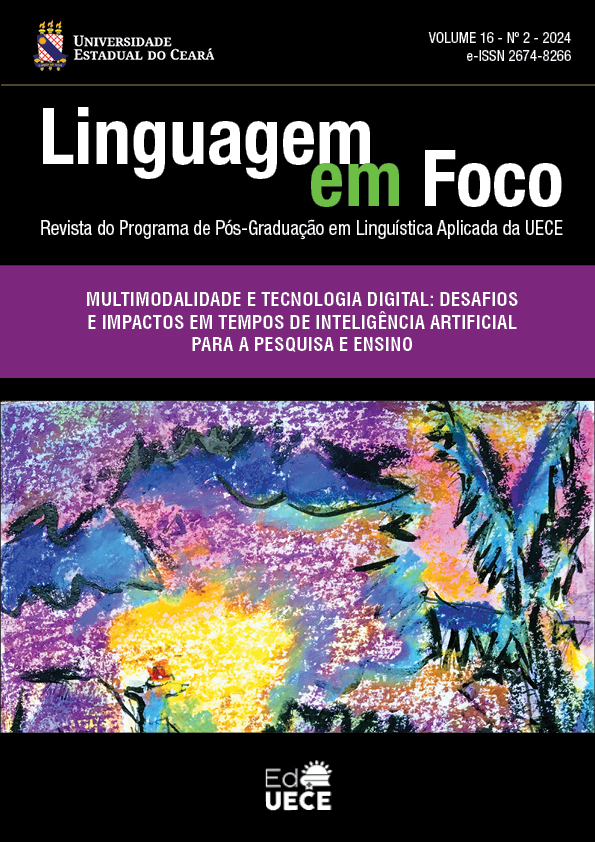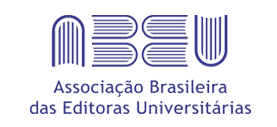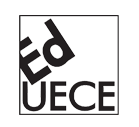Engaging with an artificial intelligence in the course e-le en (form)acción
analysis of the semiotic resources by the interactive metafunction from the visual grammar design perspective
DOI:
https://doi.org/10.46230/lef.v16i2.13026Keywords:
multimodality, digital pedagogical material, alternative reality game, artificial intelligenceAbstract
Multimodality is an approach that makes it possible to read and interpret the world by providing and giving it different meanings. In the technology sphere, multimodality is noticeable to human eyes, mainly in the digital game worlds, due to the creating of immersive environments that make enriched, engaging experiences possible for the players. In this context, Alternative Reality Games (ARG) are game genres that combine fiction and reality in a transmedia narrative marked by clues and challenges. This study analyzes how the semiotic resources used in ARGs, especially those in the challenges, provoke the player's involvement in solving problems in an online continuing education course for Spanish teachers, based on studies sustained by Social semiotics, Visual Grammar Design, game-based learning, gamification, and the framework ARCS. To do it, this is a qualitative netnography study, focusing on seven challenges proposed in the pedagogical digital material available in the online course E-LE en (form)acción. Results highlight that it is the association of semiotic resources related to each communication mobilized mode (oral, visual, gestural, audio, and written), along with the representation of Dulce - an intelligent artificial guide character who appears positioned with her eyes and body forward, at the player's eye level, and in gradations of distance - that reveal a closeness to the viewer. Therefore, we can infer that these aspects can help focus the course takers' attention, the relevance of what is asked of them, their confidence in developing the challenge, and their satisfaction in completing it.
Downloads
References
ASSUNÇÃO, I. de O.; MORAES, A. P. P. de; RADAELLI, E. C.; BORBA, L. M. de; CAMPOS, A. L. B.; OLIVEIRA, M. R. de.; LINHATI, S. T.; REIS, S. C. dos. Until Afternoon Remake: um Jogo de Realidade Alternativa (ARG) para o uso no contexto universitário. XXII Simpósio Brasileiro de Jogos e Entretenimento Digital, Anais do XXII SBGames, 2023, p. 01-09. Disponível em: https://sol.sbc.org.br/index.php/sbgames_estendido/article/view/27903/27713 Acesso em: 05 abr. 2024.
CONOLLY, T. M. Using alternate reality games to support the teaching of modern foreign languages. Proceedings of the Fourth International Conference on Web Information Systems and Technologies. v. 1, Portugal, May, p. 428-434, 2008. Disponível em: https://www.researchgate.net/publication/220723921_Using_Alternate_Reality_Games_to_Support_the_Teaching_of_Modern_Foreign_Languages Acesso em: 29 abr. 2023.
CONOLLY, T. M.; STANSFIELD, M.; HAINEY, T. An alternate reality game for language learning: ARGuing for multilingual motivation. Computers & Education. v. 57, I. 1, p. 1389-1415, Aug. 2011. DOI: https://doi.org/10.1016/j.compedu.2011.01.009. Disponível em: https://www.sciencedirect.com/science/article/abs/pii/S0360131511000261. Acesso em 02 maio 2023.
CRESWELL, J. W. Seleção de um projeto de pesquisa. In: CRESWELL, J. W. Projeto de pesquisa: métodos qualitativo, quantitativo e misto. Tradução Magda Lopes, 3ed., Porto Alegre: Artmed, 2010. p. 24-47.
DETERDING, S.; SICART, M.; NACKE, L.; O’HARA, K.; DIXON, D. Gamification: using game-design elements in non-gaming contexts. In: Proceedings Of The 2011 Annual Conference Extended Abstracts On Human Factors In Computing Systems, Chi 2011. Vancouver, Canadá. Extended Abstracts Volume, p. 7-12, May, 2011. DOI:10.1145/1979742.1979575. Disponível em https://www.researchgate.net/publication/221518895_Gamification_Using_game_design_elements_in_non-gaming_contexts. Acesso em: 15 ago. 2024.
GEE, J. P. Learning and games. In: SALEN, K. The ecology of games: connecting youth, games, and learning. Cambridge, MA: The MIT Press, 2008, p. 21–40.
GUALBERTO, C. L. Multimodalidade em livros didáticos de língua portuguesa: uma análise a partir da semiótica social e da gramática do design visual. 2016. 179f. Tese (Doutorado) – Universidade Federal de Minas Gerais, MG, 2016. Disponível em: https://repositorio.ufmg.br/handle/1843/MGSS-A8KNM8. Acesso em: 03 jun. 2023.
HALLIDAY, M. A. K.; MATTHIESSEN, C. M. I. M. An introduction to Functional Grammar. London: Hodder Education, 2004.
HALLIDAY, M. A. K.; MATTHIESSEN, C. M. I. M. Halliday's Introduction to Functional Grammar. New York: Routledge, 2014.
HODGE, R.; KRESS, G. Social Semiotics. Cambridge: Polity Press, 1988.
KAPP, K. M. The gamification of learning and instruction: game-based methods and strategies for training and education. San Francisco: Pfeiffer, 2012.
KELLER, J. M. Motivational Design for Learning and Performance: The ARCS Model Approach. Flórida: Springer, 1984.
KELLER, J. M. Motivational Design for Learning and Performance: The ARCS Model Approach. Flórida: Springer, 2010.
KOZINETS, R. V. Netnografia: realizando pesquisa etnográfica online. Porto Alegre: Penso, 2014.
KRESS, G. Multimodality: A social semiotic approach to contemporary communication. London: Routledge, 2010.
KRESS, G.; VAN LEEUWEN, T. Reading images: The Grammar of Visual Design. 2nd. ed. Victoria: Deakin University, 1996.
KRESS, G.; VAN LEEUWEN, T. Reading images: The Grammar of Visual Design. 2nd. ed. London: Routledge, 2006.
KRESS, G.; VAN LEEUWEN, T. Reading images: the grammar of visual design. 3. ed. London and New York: Routledge, 2021.
LÓPEZ-MERA, D. D.; GUTIÉRREZ, A. C. A.; CHÁVEZ, S. E. S.; MONTOYA, B. C. H.; ROJAS, E. H. P.; OSORNO, S. V. Bases para el desarrollo de un Juego de Realidad Alternativa educativo. Revista Sapientía, Cali, v. 9, n. 17, p. 24-31, 2017. Disponível em: https://revistas.uniajc.edu.co/index.php/sapientia/article/view/97 Acesso em: 30 maio 2022.
LINHATI, S. T.; REIS, S. C. dos. Formação docente por meio de jogos de realidade alternativa: uma proposta de curso de formação continuada a distância para professores de espanhol. Revista Letras, Ed. Especial, v. 32, n. 1, p. 159-177, 2022. DOI: https://doi.org/10.54278/sapientia.v9i17.97. Disponível em: https://periodicos.ufsm.br/letras/article/view/71301. Acesso em: 21 abr. 2024.
LINS, A. M. Uso de um Alternate Reality Game (ARG) no ensino de língua inglesa. In: Caderno de programação e resumos do IV SIGATEC. Santa Maria, Rio Grande do Sul. p. 60-61, 2021. Disponível em: https://www.ufsm.br/app/uploads/sites/856/2021/10/Caderno-Resumos-e-Programacao-IV-SIGATEC.pdf. Acesso em: 01 ago. 2022.
LINS, A. M. Uso de um Alternate Reality Game (ARG) no Ensino de Língua Inglesa do Ensino Médio Técnico em Agropecuária. 2022. 223f. Qualificação de Dissertação (Mestrado em Linguística Aplicada) - Universidade de Taubaté, Taubaté, SP, 2022.
MCGONIGAL, J. A realidade em jogo: por que os games nos tornam melhores e como eles podem mudar o mundo. 1 ed. Rio de Janeiro: Best Seller, 2017.
RENHAIRDT, J.; SYKES, J. M. Conceptualizing digital game-mediated L2 learning and pedagogy: game-enhanced and game-based research and practice. In: REINDERS, H. Digital games in language learning and teaching. London: Palgrave Macmillan, 2012, p. 32-49.
REINHARDT, J. Gameful second and foreign language teaching and learning: theory, research, and practice. New Zealand: Palgrave Macmillan, 2019.
VYGOTSKY, L. S. A formação social da mente. 4 ed. São Paulo: Martins Fontes, 1991. Disponível em: https://edisciplinas.usp.br/pluginfile.php/3317710/mod_resource/content/2/A%20formacao%20social%20da%20mente.pdf Acesso em: 18 set. 2019.
WINNICOTT, D. W. O brincar e a realidade. Rio de Janeiro: Imago Editora, 1975. Disponível em: https://www.academia.edu/25515894/WINNICOTT_D_W_O_Brincar_e_a_Realidade Acesso em: 25 nov. 2022.

Downloads
Published
How to Cite
Issue
Section
License
Copyright (c) 2024 Suzana Toniolo Linhati, Susana Cristina dos Reis

This work is licensed under a Creative Commons Attribution 4.0 International License.
Authors who publish in Linguagem em Foco Scientific Journal agree to the following terms:
- Authors retain the copyright and grant the journal the right of first publication. The articles are simultaneously licensed under the Creative Commons Attribution License which allows sharing the work with an acknowledgement of its authorship and initial publication in this journal.
- The concepts issued in signed articles are the absolute and exclusive responsibility of their authors. Therefore, we request a Statement of Copyright, which must be submitted with the manuscript as a Supplementary Document.
- Authors are authorized to make the version of the text published in Linguagem em Foco Scientific Journal available in institutional repositories or other academic work distribution platforms (ex. ResearchGate, Academia.edu).




























